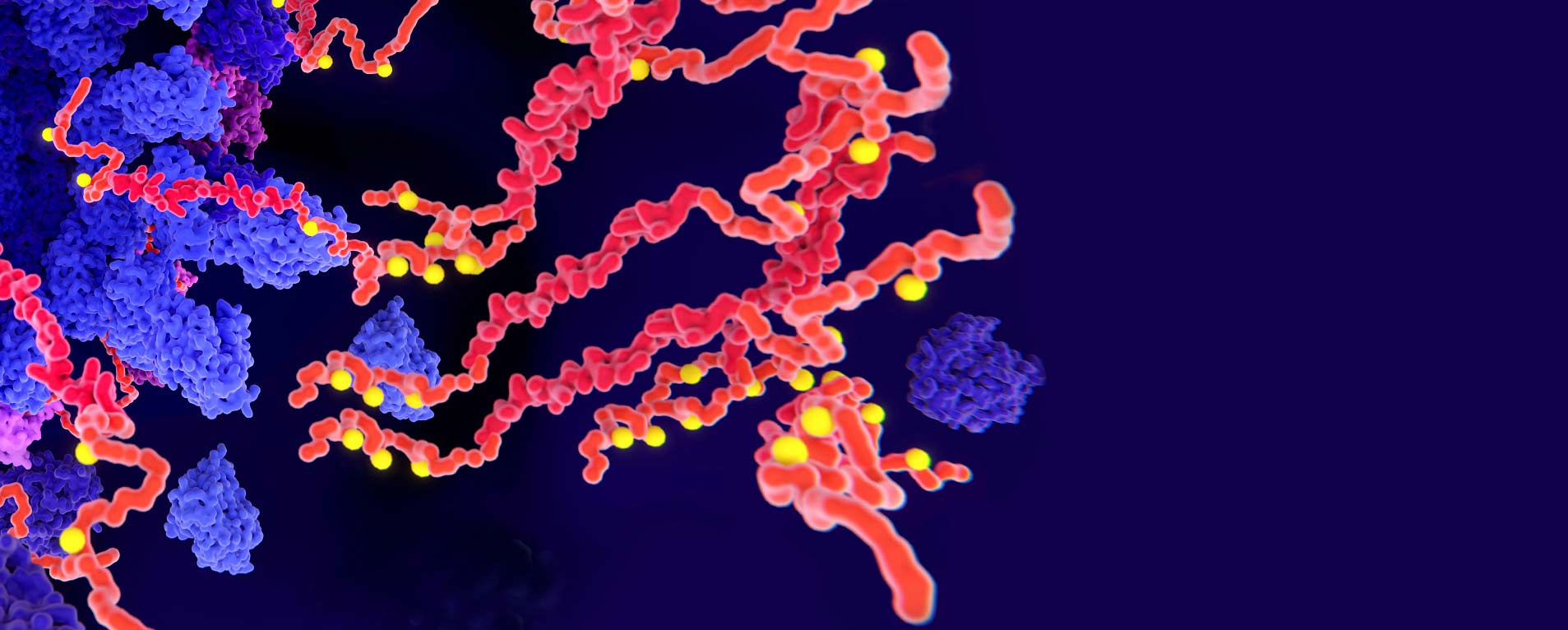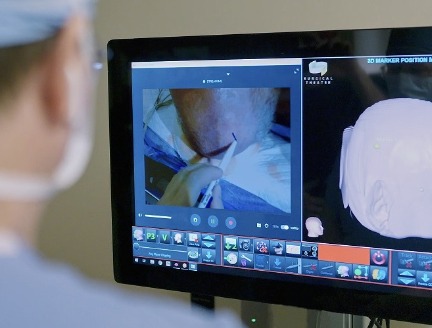


Precision Medicine
Rethinking the Unthinkable
Tackling dementia with multi-modal imaging and precision medicine

A colorized image of tau, the protein that stabilizes microtubules in the central nervous system and may be the key to treating Alzheimer's.
Houston Methodist neurologist Joseph Masdeu, MD, PhD, tends to think outside the box. And he applies this skill to what may be medicine’s greatest mystery: the brain and how it works.
Shortly after arriving at Houston Methodist in 2014, Masdeu took a bold step. He reported his findings that neurodegeneration in Alzheimer’s was associated with abnormal tau, a protein that forms inside cells from the normal tau that maintains the integrity of microtubules. At the time, most Alzheimer’s experimental therapies focused on the amyloid protein. But Masdeu did not find a similar association with the amyloid protein, also found in this disorder.
Joseph C. Masdeu, MD, PhD, discusses his work in this video. Click to view.
In April 2019, Masdeu pushed forward with the concept that abnormal tau may spread in the brain through the normal brain highways, the white matter tracts that connect brain hubs to each other in a complex network arrangement. His study, published in The Journal of Nuclear Medicine, is the first to demonstrate this concept in vivo in humans.
Using sophisticated neuroimaging, Masdeu and his team, particularly Belen Pascual, PhD, combined MRI and 18F-flortaucipir PET to study tau in a rare disease that affects the language-related syntactic brain network. The anterior node of this network, in the frontal lobe, was affected first. Sick neurons found here, containing tau, contacted and “infected” neurons in the separate, but connected, posterior node in the temporal lobe. The white matter tract connecting both nodes was affected, as would be expected when the neurons in the anterior node died first.
This study will be a transformational resource for further research, including groundbreaking research on the treatment of neuroinflammation. It opens a pathway toward the use of precision medicine for prevention, and a cure, for Alzheimer’s disease and all forms of dementia.

Joseph C. Masdeu, MD, PhD
Graham Family Distinguished Chair for Neurological Sciences,
Stanley H. Appel Department of Neurology
Director, Nantz National Alzheimer Center
Professor of Neurology
Houston Methodist
This discovery reveals a window of opportunity for treatment, because to jump from neuron to neuron, tau appears to become extracellular—and possibly amenable to immunotherapy using antibodies that target this abnormal protein. Several pharmaceutical companies are interested in this approach: Three clinical trials are currently underway at the Nantz National Alzheimer Center of the Houston Methodist Stanley H. Appel Department of Neurology using anti-tau antibodies from Abbvie, Biogen and Eli Lilly.
The Nantz National Alzheimer Center also is a leading partner in the Houston Alzheimer Study, a precision medicine cohort based in the Texas Medical Center, which intends to enroll 550 participants over age 40 to explore a range of cognitive disorders using advanced imaging, chemical analysis and artificial intelligence.
Learn more about research studies and clinical trials at Nantz National Alzheimer Center here.
Pascual, B, Funk, Q, Zanotti-Fregonara, P, Pal, N, Rockers, E, Yu, MM, Spann, B, Román, GC, Schulz, PE, Karmonik, C, Appel, SH, & Masdeu, JC. Multimodal 18F-AV-1451 and MRI findings in non-fluent variant primary progressive aphasia: possible insights on nodal propagation of tau protein across the syntactic network. 2019, Journal of Nuclear Medicine, vol. 60, no. 7. DOI: 10.2967/jnumed.118.225508.
LaVonne Carlson, October 2019








